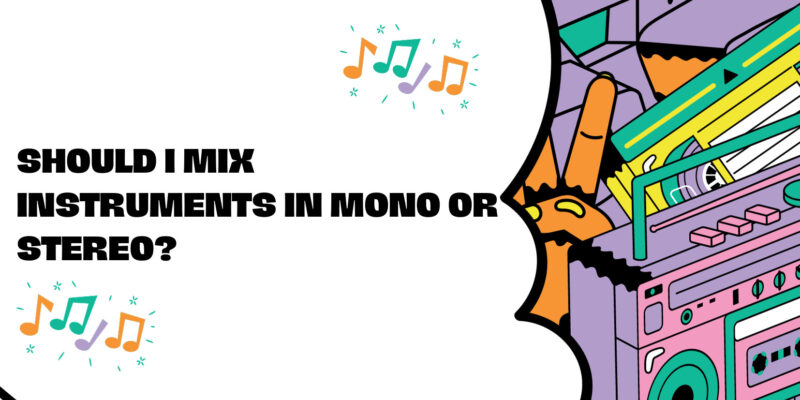Mixing music is a complex and creative process that involves blending various elements together to create a balanced and cohesive sound. One of the fundamental decisions you’ll face as a mixing engineer is whether to pan and process individual instruments in mono or stereo. The choice between mono and stereo mixing depends on the specific needs of your production, your artistic vision, and the characteristics of the instruments you’re working with. In this article, we’ll explore the considerations for mixing in mono and stereo and when to choose one over the other.
Mixing in Mono
Mono mixing involves summing all audio channels to a single, center-panned position. This means that all sounds are played through a single speaker or in the center of a stereo field. Here are some situations where mixing in mono can be advantageous:
- Clarity and Balance: Mixing in mono can help you achieve a clear and balanced mix. It forces you to focus on the core elements of your arrangement and ensures that each instrument occupies its own space in the frequency spectrum.
- Compatibility: Many playback systems, including smartphones and some Bluetooth speakers, are mono. Mixing in mono ensures that your music will sound consistent and coherent on all playback devices.
- Phase Issues: In stereo mixing, phase issues can arise when two identical signals (e.g., from a stereo microphone pair) are not perfectly aligned. Mixing in mono can help identify and address these phase problems.
- Vintage and Lo-fi Aesthetics: If you’re aiming for a vintage or lo-fi sound, mono mixing can help recreate the mono playback systems of the past and contribute to the desired nostalgic vibe.
- Checking Mono Compatibility: Mixing in mono periodically during the mixing process is a good practice to ensure your mix will translate well to mono playback systems.
Mixing in Stereo
Stereo mixing takes advantage of the full stereo field, allowing you to pan instruments across the stereo spectrum, apply stereo effects, and create a wider spatial image. Here are scenarios where stereo mixing is preferred:
- Spatial Depth: Stereo mixing provides a sense of depth, width, and immersion that can enhance the listening experience. It allows you to position instruments spatially in the mix, creating a sense of movement and dimension.
- Creative Effects: Stereo effects like reverb, delay, and stereo modulation can add character and ambiance to your mix. These effects are essential for creating spacious and immersive soundscapes.
- Soundstage Separation: In genres where soundstage separation is crucial, such as orchestral music or certain types of electronic music, stereo mixing allows for precise placement of instruments within the stereo field.
- Modern Production Styles: Many contemporary genres, including pop, rock, and electronic dance music, often favor wide stereo mixes to create a larger-than-life sound that fills the stereo spectrum.
- Instrument-specific Stereo Imaging: Some instruments, like stereo synthesizers or stereo-recorded acoustic instruments, inherently benefit from being mixed in stereo to preserve their natural character.
The Middle Ground: Utilizing Both
In practice, many mix engineers use a combination of mono and stereo techniques. They might keep the core elements, such as vocals and bass, in mono for clarity and focus while applying stereo processing to other instruments and effects to create a spacious and dynamic mix.
Conclusion
The decision to mix in mono or stereo should be guided by your artistic vision, the characteristics of your audio sources, and the context of your production. There is no one-size-fits-all answer, and the best approach may vary from one project to another. As a mixing engineer, it’s important to have the flexibility and skills to use both mono and stereo techniques effectively, allowing you to craft mixes that sound great on a wide range of playback systems and resonate with your audience’s expectations.


